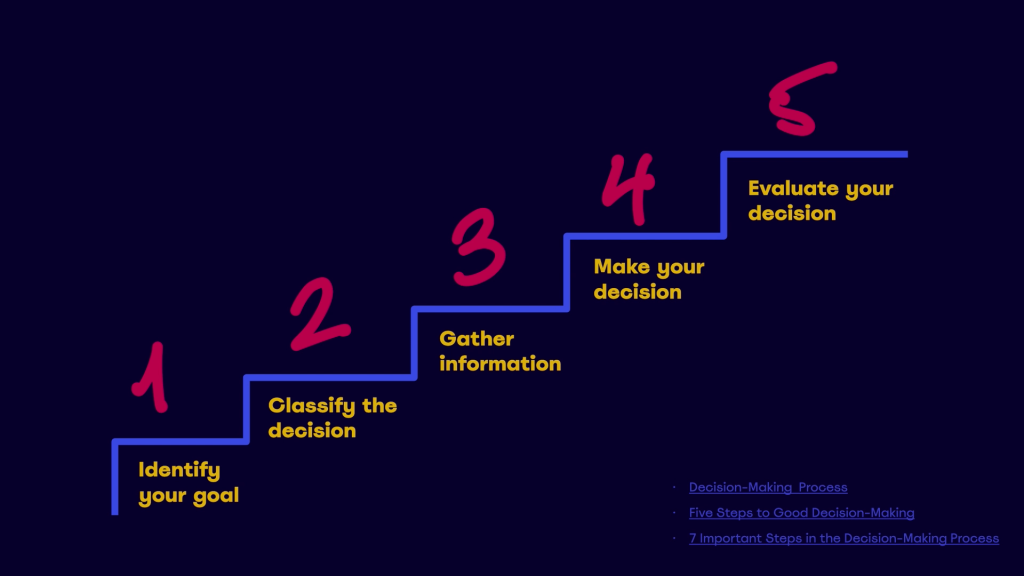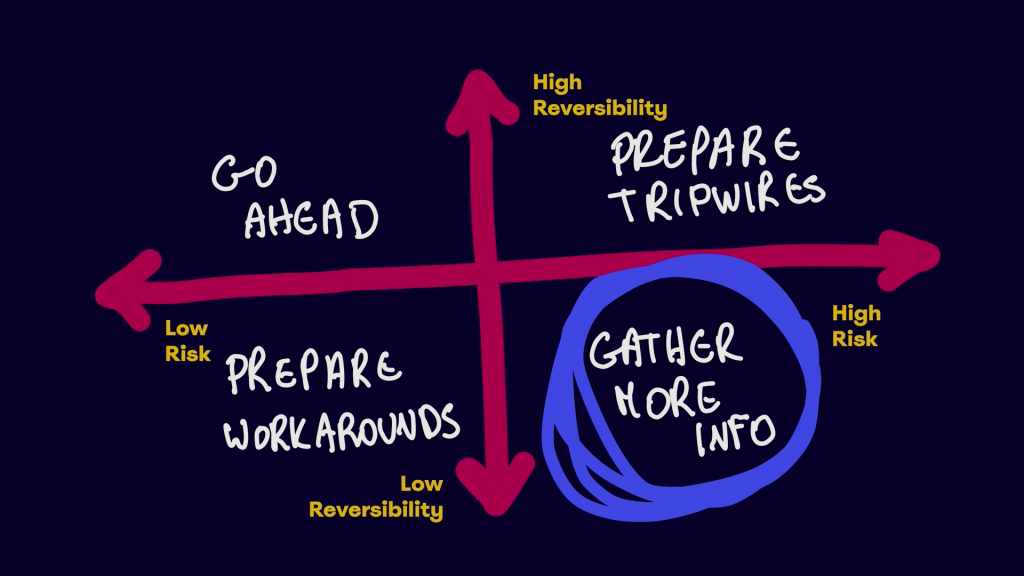
Invest heavily in a new product, or play it safe? Does this business crossroad sound familiar? While it might be tempting to think that decision-making is for a big fish in the company and the rest only gets to deal with the consequences, it may not be entirely true. No matter the occupation, position, or level of experience, the 5 steps for effective decision-making shared by Dalia El-Shimy, the Head of UX Research at Miro, in her talk from WebExpo 2023 are just for you.
In expertise we trust
We have witnessed many business decisions that didn’t exactly bring the desired fruits. In 2009 based on research T.H. Davenport came up with the concept of “decision disorder” to describe a recurring pattern of poor decision-making in significant business events. What has gone wrong in these cases is that decision-making was left in the hands of senior executives without undergoing systematic analysis. When decision-making power is shifted away from authority figures to those with relevant expertise, it creates space to approach decision-making with clarity and confidence.
5 steps to excellent decision-making
Effective decision-making is a cornerstone of success in both personal and professional lives. There are many resources on this topic offering various frameworks but being an experienced researcher Dalia distills down the core points of the process into 5 manageable steps.

Step 1: Identify your goal
It’s always good to know where we are heading to, that’s why we need to know our final destination first. Define your goal by framing the three following areas:
👉 The problem: What’s the problem? Why to solve it? How to measure success of the solution?
👉 The players: Who needs to be involved?
👉 The timing: Set a deadline. What happens if you miss it?
Step 2: Classify your decision
This is a critical moment that can greatly impact the approach you take, and there are two fundamental factors to take into consideration, which are risk assessment and reversibility. In other words how much risk is involved in this decision and how reversible the decision is.
Weighing the two factors on a two-by-two-grid there are 4 possible outcomes presented in Dalia’s slide:

Step 3: Gather information
To be able to make a decision, it is essential to gather information and fill in the knowledge gaps. As humans, we tend to rely on imperfect information, past experiences, and emotions, which is natural yet not always helpful. That’s why a systematic and rigorous approach steps in the game. Dalia demonstrates how it works on an example of a typical product development cycle:
💡 Idea (the problem)
📝 Define the aspects of the problem
🔎 Explore possible solutions
🧩 Build the solution
🚀 Ship the solution
🛠 Tweak the solution
Step 4: Make your decision
Alright, you filled the gaps in your knowledge and now you are ready to make your decision. This is not our final destination though, so don’t forget to proceed to the next very important step.
Step 5: Decision evaluation
Unfortunately, the journey doesn’t end with making a decision. Evaluation is a step many people overlook but It’s inevitable on our way to improving decision-making skills. Reflect on the impact, consider what could have been done differently, and assess whether the initial goals were met.
Mastering decision-making doesn’t have to be rocket science. Just remember to assess the importance, weigh the risks, choose your path, and then evaluate to learn from past mistakes and get even better results next time. The whole process is about finding the right answers to the right questions. To get more tips on that, we recommend you hit the play button to watch the full talk.

